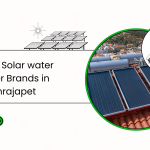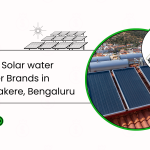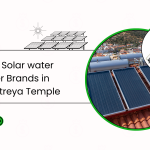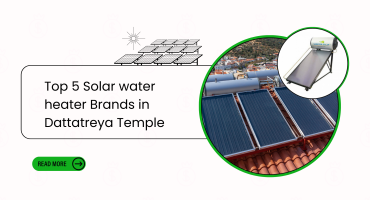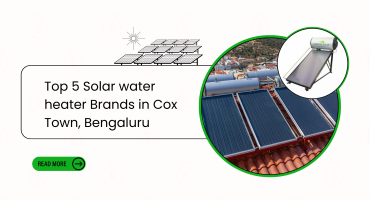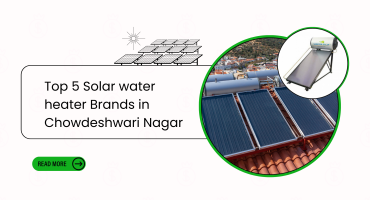
Varistor Solar is dedicated to empowering individuals, businesses, and communities with the transformative power of solar energy. We believe in a brighter, cleaner future and are committed to making sustainable living accessible to everyone.
+91-9113690456
Email: sales@varistorsolar.com
Varistor Solar
NO 40/C, KALKERE VILLAGE,12TH MAIN, NRI LAYOUT,Ramamurthy Nagar, Bangalore North,Bangalore- Karnataka, 560016
Introduction
In the pursuit of eco-friendly and cost-effective alternatives, solar water heaters have emerged as a beacon of sustainable living. Harnessing the power of the sun to provide hot water for various household needs is not just an environmentally conscious choice but also a smart financial move in the long run. However, choosing the right type of solar water heater can be a daunting task. Today, we delve into the intricacies of pressurized and non-pressurized solar water heaters, shedding light on their differences and helping you determine which one suits your needs best.
Understanding the Basics
Before we embark on the journey of comparing pressurized and non-pressurized solar water heaters, let's take a moment to understand the fundamental principles behind both.
Solar Water Heater Overview
A solar water heater is a device that utilizes sunlight to heat water for residential, commercial, or industrial purposes. It consists of solar collectors and a system to transfer the heat from the collectors to the water. The two main types are pressurized and non-pressurized, each with its unique set of features and advantages.
Pressurized Solar Water Heaters
What Sets Pressurized Solar Water Heaters Apart?
Pressurized solar water heaters are systems that use a pump to circulate the heat transfer fluid between the solar collectors and the storage tank. The key differentiator is the presence of pressure in both the collector and the storage tank. This pressure allows for better heat transfer efficiency and enables the use of these systems in pressurized plumbing setups within buildings.
Advantages of Pressurized Solar Water Heaters
Efficiency: Pressurized systems are known for their efficiency in transferring heat. The pressurized circulation ensures a swift transfer of heat from the collectors to the water.
Compatibility with Existing Plumbing Systems: These systems are easily integrated into existing plumbing setups, making them suitable for both new constructions and retrofitting.
Consistent Water Pressure: As the name suggests, pressurized systems maintain a constant water pressure, ensuring a reliable supply of hot water even in multi-story buildings.
Faster Heating: Pressurized systems often heat water more quickly, making them ideal for areas with high hot water demand.
Non-Pressurized Solar Water Heaters
Unveiling the Simplicity of Non-Pressurized Systems
In contrast, non-pressurized solar water heaters rely on natural convection for the circulation of water between the collectors and the storage tank. These systems are typically simpler in design and do not require pumps or pressure mechanisms.
Advantages of Non-Pressurized Solar Water Heaters
Simplicity: The absence of complex pressure systems makes non-pressurized solar water heaters simpler to install and maintain.
Affordability: Non-pressurized systems are generally more affordable due to their simpler design, making them an attractive option for budget-conscious consumers.
Lower Maintenance Costs: With fewer components and no pressure-related issues, non-pressurized systems often have lower maintenance costs over their lifespan.
Suitable for Low-Pressure Areas: In areas with low water pressure, non-pressurized systems can be a practical choice as they don't rely on external pressure for water circulation.
Choosing the Right One for You
Now that we've explored the nuances of both pressurized and non-pressurized solar water heaters, the crucial question arises: which one is the best fit for your needs?
Considerations for Pressurized Solar Water Heaters
Building Type: Pressurized systems are well-suited for multi-story buildings where maintaining consistent water pressure is essential.
Existing Plumbing: If you are looking to integrate a solar water heater into an existing pressurized plumbing system, a pressurized solar water heater is likely the more convenient option.
Hot Water Demand: For households with high hot water demand, such as those with multiple bathrooms, pressurized systems can meet these demands more efficiently.
Considerations for Non-Pressurized Solar Water Heaters
Budget Constraints: If cost is a significant factor, non-pressurized solar water heaters offer a more budget-friendly alternative without compromising on the basic benefits of solar heating.
Simple Installation: Non-pressurized systems are easier to install, making them suitable for both new constructions and retrofitting projects.
Low Maintenance Preference: If you prefer a solar water heater with minimal maintenance requirements, a non-pressurized system might be the right choice for you.
Conclusion
In the realm of solar water heaters, the choice between pressurized and non-pressurized systems ultimately depends on your specific needs, preferences, and budget constraints. Both options offer environmentally friendly solutions that harness the power of the sun to provide you with hot water, reducing your reliance on conventional energy sources.
As the solar revolution gains momentum, it's essential to stay informed about the available options to make an educated decision. Whether you opt for the efficiency of a pressurized system or the simplicity of a non-pressurized one, the overarching goal remains the same – to contribute to a greener and more sustainable future.
In conclusion, the best solar water heater for you is the one that aligns seamlessly with your lifestyle, building structure, and budget. As you embark on the journey towards a more sustainable living space, let the warmth of the sun guide you in making the right choice for your home. Embrace the power of solar energy and enjoy the countless benefits it brings to your daily life.
Remember, the keyword to a brighter and eco-friendly future is the solar water heater, and as you navigate this decision-making process, keep in mind the best solar water heater in India that aligns perfectly with your unique requirements. Happy solar heating!
Frequently asked Questions
A solar water heater uses sunlight to heat water through solar collectors, converting solar energy into thermal energy for household use.
Pressurized systems use a pump for water circulation, maintaining constant pressure. Non-pressurized systems rely on natural convection without a pump.
Yes, they integrate easily into existing plumbing setups, especially in multi-story buildings, ensuring consistent water pressure.
Non-pressurized systems are simpler, more affordable, and have lower maintenance costs. They work well in low-pressure areas.
Consider factors like building type, existing plumbing, hot water demand, budget, and maintenance preferences. Pressurized for efficiency, non-pressurized for simplicity and cost-effectiveness.
Final Say:
If you are looking for the best solar water heater in India, Varistor Solar™ emerges as a standout choice. As a trusted provider of solar solutions, Varistor Solar™ has garnered the confidence of many customers. Join the ranks of those who trust us to deliver reliable and efficient solar water heaters. To take the first step towards a greener and more sustainable future, give us a call at 9113690456 or drop us an email at sales@varistorsolar.com. Let Varistor Solar™ be your partner in harnessing the power of the sun for a brighter and more energy-efficient tomorrow.
"WHAT YOU CAN READ NEXT"
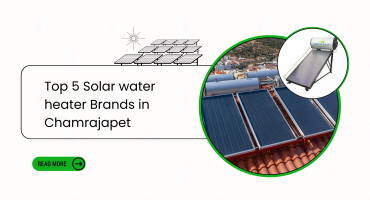 Read more +16 May 2025 in Solar Water Heater
Read more +16 May 2025 in Solar Water HeaterTop 5 Solar water heater Brands in Chamrajapet, Bengaluru
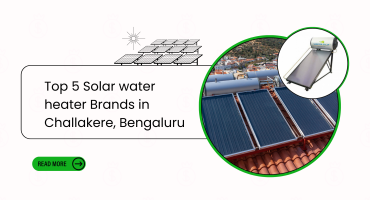 Read more +16 May 2025 in Solar Water Heater
Read more +16 May 2025 in Solar Water Heater
 Call or Text:
Call or Text: 
